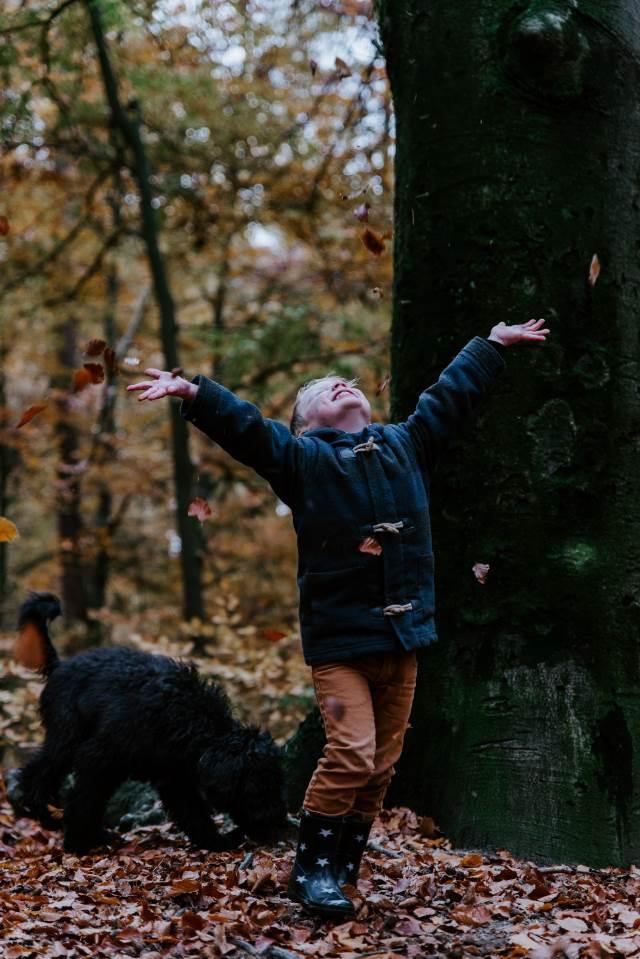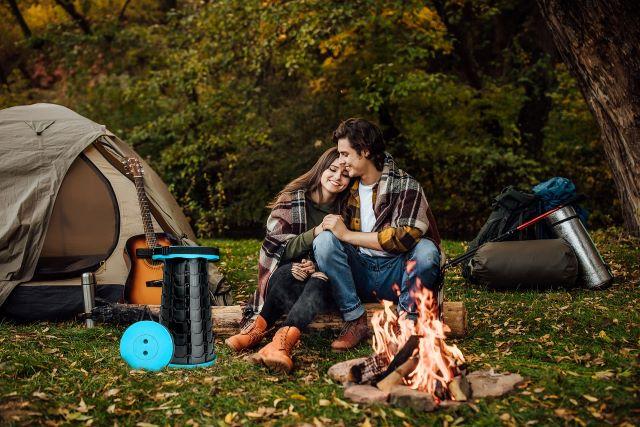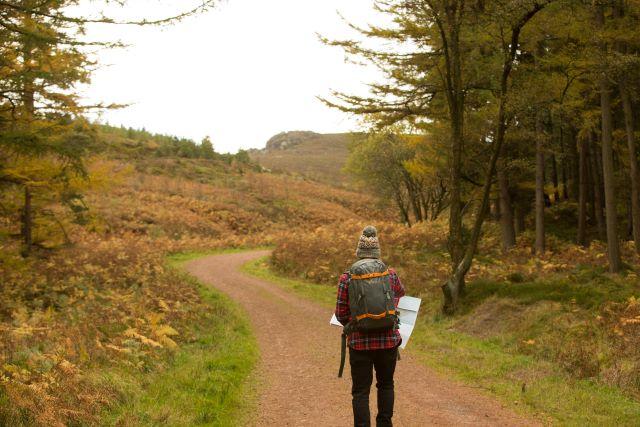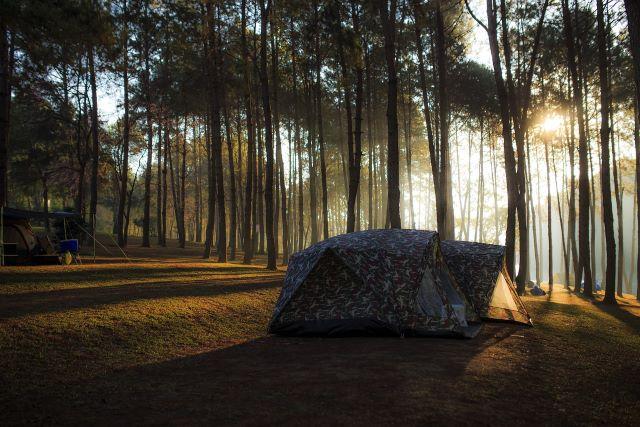As outdoor enthusiasts, adventurers, and nature lovers, there’s nothing quite like the thrill of exploring the great outdoors. Whether it’s hiking through pristine forests, camping beneath a starry sky, or embarking on a challenging backcountry trek, the natural world offers endless opportunities for awe and wonder.
However, with this privilege comes a vital responsibility – to protect and preserve the environments we cherish. In this article, we delve into the essential principles of Leave No Trace, a philosophy that guides us in minimizing our impact on the environment while enjoying outdoor recreation.

Join us in understanding the importance of responsible outdoor activities and how each of us can contribute to the well-being of our planet’s wild places.
Be Responsible while recreating outdoors
Responsible outdoor recreation is not just a concept; it’s a commitment to ethical and sustainable practices. Leave No Trace is a set of seven core principles that serve as a compass for adventurers, helping them navigate the delicate balance between exploration and preservation.
These principles provide a framework for reducing our impact on the natural world, ensuring that future generations can revel in the same beauty we enjoy today. From picking up after ourselves to respecting wildlife and leaving natural and cultural features untouched, these guidelines are more than just rules – they’re a pledge to be stewards of the Earth.

In this article, we will delve into each of the seven Leave No Trace principles, exploring practical tips and real-life examples that illustrate how to put them into action. Whether you’re a seasoned outdoors person or a novice nature enthusiast, there’s always something new to learn about responsible outdoor recreation.
So, let’s embark on this journey together, as we deepen our appreciation for the great outdoors and vow to protect its splendor for generations to come.
The Leave No Trace 7 Principles
The Leave No Trace Center for Outdoor Ethics has developed seven essential principles that form the foundation of responsible outdoor recreation. These principles are like a roadmap for anyone who wants to enjoy the natural world while leaving minimal impact.
By adhering to these guidelines, you can ensure that your outdoor adventures are not only enjoyable but also environmentally friendly.
In this article, we will explore each of these principles in detail, providing insights, examples, and practical tips to help you integrate responsible outdoor practices into your adventures. Whether you’re a seasoned outdoors enthusiast or just getting started, embracing the Leave No Trace principles is a step towards becoming a better steward of our planet.
1. Plan Ahead & Prepare
Importance of trip planning
Before embarking on an outdoor adventure, thorough trip planning is essential. This not only enhances safety and enjoyment but also minimizes environmental impact. Adequate planning helps you understand potential risks, choose sustainable trails and campsites, and adhere to area regulations.
Research the location, pack appropriate gear, and leave your itinerary with a trusted person. By planning effectively, you prioritize safety and environmental conservation, ensuring a responsible outdoor experience.

Researching and understanding regulations and guidelines
Each outdoor destination has unique rules and guidelines in place to protect its ecosystems. Responsible outdoor enthusiasts take the time to research and understand these regulations before setting out. This includes knowing where camping is allowed, respecting fire bans, and following specific Leave No Trace recommendations for the area.
Being well-informed ensures you don’t inadvertently harm the environment and helps preserve these natural spaces for future generations to enjoy.
Packing appropriate gear and supplies
Responsible outdoor recreation begins with packing the right gear and supplies. This not only ensures your safety and comfort but also minimizes your impact on the environment. Adequate clothing, shelter, and food are essential. Use reusable containers to reduce waste, and opt for eco-friendly products when possible.
Packing appropriate gear helps you stay self-sufficient and reduces the need to forage or disturb the natural surroundings.
2. Travel & Camp on Durable Surfaces
Sticking to established trails and campsites
When you choose established trails and campsites, you minimize your impact on the environment. Trails and campsites are designed to concentrate visitor activities in specific areas, reducing the spread of impact. Straying off designated paths can damage fragile ecosystems, disturb wildlife, and lead to soil erosion.
Always follow the marked routes and camp only in designated areas to help preserve the natural beauty of the outdoors for future generations.
Minimizing impact on vegetation and soil
Protecting the flora and soil is essential for maintaining the ecological balance of outdoor environments. Avoid trampling on plants, especially in sensitive areas like alpine meadows and deserts. Stay on established trails and paths to prevent soil erosion and vegetation damage.
When camping, choose durable surfaces like rock, gravel, or established campsites instead of pristine areas with fragile vegetation. By treading lightly on the land, you contribute to the preservation of these natural spaces for everyone to enjoy.

Setting up camp in designated areas
Camp in established campsites and follow any posted guidelines or restrictions. Using designated sites minimizes the impact on the environment by concentrating activities in specific areas. These sites are often equipped with amenities like fire rings and toilets, reducing the impact on the surrounding land and making it easier to Leave No Trace.
Campfires may be allowed in certain areas, but always follow local regulations, and consider using a camp stove for cooking to minimize fire risk and impact on the ecosystem.
3. Dispose of Waste Properly
Importance of proper waste management
Dispose of waste properly by packing out all trash and litter. Follow the “pack it in, pack it out” principle. This includes food scraps, litter, and even biodegradable items like banana peels, which can take a long time to decompose in some environments.
Use established toilet facilities when available; in remote areas, follow Leave No Trace guidelines for human waste disposal. Proper waste management ensures that natural areas remain pristine and minimizes the impact on wildlife and ecosystems.

Pack-in, pack-out principle
Adhere to the “pack it in, pack it out” principle by bringing back everything you brought with you. This includes all trash, litter, and personal items. Leave no trace of your visit, ensuring that the natural environment remains free from debris and waste. Responsible outdoor enthusiasts understand the importance of taking their belongings and garbage home with them, leaving nature undisturbed.
Utilizing designated waste disposal facilities
While enjoying the outdoors, it’s crucial to use established waste disposal facilities, such as trash bins and recycling centers, when available. These facilities are strategically placed to minimize the environmental impact of waste.
Responsible outdoor enthusiasts make an effort to use these resources and never leave trash behind in natural areas. Proper waste disposal is a key component of leaving no trace and preserving the beauty of outdoor spaces.
4. Leave What You Find
Respecting natural and cultural artifacts
Outdoor enthusiasts must show respect for natural and cultural artifacts they encounter. This includes refraining from touching, disturbing, or removing rocks, plants, historical items, or any objects of significance.
By leaving these artifacts undisturbed, we ensure that future generations can appreciate and learn from them. Respecting these treasures helps maintain the historical and cultural integrity of outdoor spaces.

Preserving historical sites and structures
Preserving historical sites and structures is crucial. Activities near historical sites should be limited to protect their integrity, and visitors should avoid touching or defacing these areas. It’s essential to respect boundaries and guidelines established for preserving historical and cultural heritage while enjoying outdoor recreation.
By doing so, we ensure these sites remain intact for future generations to explore and appreciate.
Avoiding taking souvenirs or disturbing natural materials
When enjoying the outdoors, it’s essential to leave everything as you found it. Avoid taking souvenirs from nature or disturbing natural materials, such as rocks, plants, or wildlife. Even seemingly small actions like picking flowers or removing rocks can disrupt fragile ecosystems and impact the environment.
Responsible outdoor recreation means enjoying the natural world without leaving a trace, allowing it to thrive undisturbed.
5. Minimize Campfire Impacts
Understanding regulations and restrictions on campfires
Campfires can be an enjoyable part of outdoor recreation, but they also carry the risk of causing significant harm to the environment. Understanding regulations and restrictions on campfires is crucial. Many areas have strict rules about when and where fires are allowed, often requiring the use of established fire rings or stoves.
Adhering to these guidelines helps prevent wildfires and ensures that the impact on the ecosystem is minimal. In some places, campfires may be prohibited altogether, and it’s essential to respect these rules to protect the environment. Always bring a camp stove as an alternative for cooking and heating, as it is a more eco-friendly choice.

Proper campfire setup and maintenance
When campfires are permitted, it’s vital to follow proper setup and maintenance procedures. Start by using established fire rings or fire pans if available, as they concentrate the impact in one area. Keep the fire small and use only small sticks and twigs you can break by hand. Avoid using large logs, as they can create intense heat and leave behind lasting scars on the landscape.
Always keep a close eye on the fire, never leave it unattended, and have a way to extinguish it, such as a bucket of water or a fire extinguisher, nearby. Use small, dry sticks to feed the fire, and never burn trash or food wrappers, as this can create pollution and attract wildlife.
When you’re done with the fire, make sure it’s completely extinguished by pouring water over it and stirring the ashes until they are cool to the touch. Leave no trace of your campfire behind to ensure the area remains pristine for future visitors.
Safely extinguishing and cleaning up campfire sites
Extinguishing a campfire properly is essential for Leave No Trace principles. Here’s how to do it:
- Allow the wood to burn completely to ash if possible.
- Pour water into the fire and stir it with a stick to cool the ashes.
- Repeat the process until the ashes are cold to the touch.
- Use a shovel or trowel to scoop up the cold ashes and scatter them over a wide area away from camp, trails, and water sources.
- Be meticulous about cleaning up all traces of the campfire, including removing any food scraps or litter from the fire ring.
By following these steps, you ensure that the campfire site is safe, and you’ve minimized your impact on the environment. Leaving a clean and undisturbed campsite is essential for preserving the beauty of outdoor spaces for future generations.
6. Respect Wildlife
Observing wildlife from a distance
Respecting wildlife is an integral part of responsible outdoor recreation. When encountering animals while enjoying the outdoors, follow these essential guidelines: Maintain a safe and respectful distance to avoid disturbing or stressing wildlife. Use binoculars or a camera with a zoom lens for a closer view without intrusion.
Refrain from feeding wild animals as it disrupts their natural behaviors and diets. Keep noise levels low to prevent startling or distressing wildlife. Never approach or attempt to touch young animals, which could lead to abandonment by their parents.

Adhere to any specific wildlife viewing guidelines provided by park authorities or experts. By respecting wildlife and their habitats, you contribute to their well-being and help preserve natural ecosystems.
Avoiding feeding or approaching animals
Avoiding feeding or approaching animals is a crucial aspect of responsible outdoor recreation. Interacting with wildlife in their natural habitats can be a thrilling and memorable experience, but it’s essential to do so in a way that ensures both your safety and the well-being of the animals.
Feeding wildlife, intentionally or accidentally, can have detrimental consequences for animals. Human food can be harmful or even deadly to them, disrupt their natural foraging behaviors, and lead to an unhealthy dependency on human handouts.
Feeding animals can also alter their behavior, making them more aggressive or likely to approach humans in search of food. This can result in dangerous encounters for both wildlife and people.
Respecting nesting areas and habitats
Respecting nesting areas and habitats is a crucial component of responsible outdoor recreation, especially in areas where wildlife relies on these spaces for breeding and raising their young. These habitats serve as safe havens for various species during vulnerable periods.
To uphold the well-being of wildlife and protect their habitats, it’s essential to exercise caution and awareness. This includes staying out of nesting areas during the designated breeding seasons, maintaining a respectful distance from these sites even when no specific restrictions are in place, and refraining from making excessive noise that could disrupt wildlife.
By adhering to these practices, outdoor enthusiasts can contribute to the conservation of these critical environments and the species that depend on them.
7. Be Considerate of Other Visitors
Respecting quiet zones and designated areas
Being considerate of other visitors is a fundamental part of responsible outdoor recreation. It involves respecting quiet zones and designated areas that may have specific rules in place to enhance the experience for everyone. Whether it’s a serene hiking trail, a tranquil campground, or a designated wildlife-watching area, adhering to posted guidelines ensures that all visitors can enjoy the natural beauty and serenity of these places without disruption.
This may involve maintaining a lower volume of conversation, refraining from playing loud music and respecting the solitude that others seek in these outdoor spaces. By doing so, outdoor enthusiasts contribute to a harmonious and enjoyable experience for everyone sharing these natural wonders.

Practicing proper trail etiquette
Practicing proper trail etiquette is essential to ensuring that outdoor spaces remain enjoyable and safe for everyone. When exploring hiking trails, biking paths, or nature preserves, hikers and outdoor enthusiasts should adhere to a set of commonly accepted guidelines.
These include yielding the trail to those going uphill, keeping to the right side of the trail, and letting faster-moving users pass safely. It’s also vital to pick up after pets, pack out all trash, and avoid disturbing wildlife or natural habitats. Following proper trail etiquette minimizes conflicts and helps preserve the beauty of these natural environments for future generations to enjoy.
Being mindful of noise pollution and privacy
Being mindful of noise pollution and respecting others’ privacy is integral to a responsible outdoor experience. In serene natural settings, sounds can carry over great distances, disrupting the tranquility and wildlife. While enjoying the outdoors, it’s essential to keep noise levels to a minimum, especially in designated quiet zones or during quiet hours at campsites.

Additionally, maintaining a respectful distance from other campers and outdoor enthusiasts provides them with the privacy they seek in these beautiful natural surroundings. By being considerate of noise and personal space, you contribute to a more peaceful and enjoyable outdoor environment for all.
Final Thoughts
In conclusion, practicing Leave No Trace principles is not just a set of guidelines; it’s a commitment to responsible and ethical outdoor recreation. These principles ensure that our natural environments remain pristine and accessible for future generations to enjoy.
By planning ahead, minimizing our impact, managing waste responsibly, and respecting wildlife and fellow visitors, we can foster a harmonious coexistence between humans and nature. Whether you’re an experienced outdoor enthusiast or a novice adventurer, embracing these principles can lead to a more rewarding and sustainable outdoor experience.
So, let’s remember that while nature is there to be explored and appreciated, it’s also our duty to preserve and protect it for the generations that follow.









